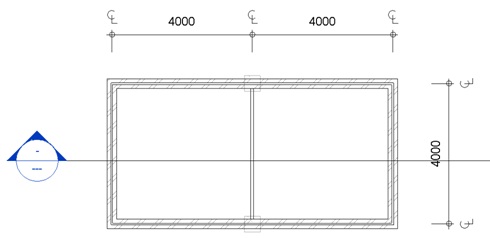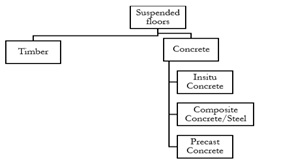Reference no: EM132532708 , Length: word count:1000
CME101 Low Rise Construction - Open Universities Australia
Aim of Task
The aim of the Case Study is to encourage students to reflect on the content of the Module notes provided so that they fully understand the topics covered in CME101 Low Rise Construction. It is designed to encourage students to undertake further research and learning in support of these Modules notes, as well as start applying their new knowledge to specific situations.

Figure 1: Level One Plan View of New Construction
Task Description
The floor plan above is an extension of an existing building. This building has a Ground Floor, Level 1 and Roof. The selected suspended floor type (Level 1) is a 150 mm thick ‘in-situ' reinforced concrete slab. As shown in the plan view, the suspended floor will be supported by a 270 mm wide double-brick cavity wall (loadbearing) at all the sides and edges. Assume that the suspended floor will be supported on both leaves of the cavity walls (which include door openings not shown). An additional internal support is a universal beam, which will be supported on two reinforced concrete columns.
Provide a report to describe the design and construction information of this suspended floor slab. Your report should answer the following questions.
Question 1
Explain whether the slab is one-way or two-way span.
Question 2
Provide a deflection diagram of this slab under loading, indicating tension and compression fibres. There is no necessary need to use a scale ruler or know the exact amount of deflection. This is to be a rough sketch only.
Question 3
Draw the Cross-Section of X - X using a suitable scale ruler to facilitate the construction process. No need to provide a Detailed Drawing of the slab to wall junction in this question. Pay critical attention to the slab itself, including reinforcement.
Question 4
Provide an annotated sketch to show the slab to wall connection (no scale required).
Question 5
To satisfy the BCA (‘Building Code of Australia') recommendations for sound insulation, assume that this floor will need to achieve the following:
• Rw (Sound Reduction Index) = 50
• IIC (Impact Insulation Class) = 50
Using the available information, find whether this design is satisfactory to achieve the above requisites. If not, suggest solutions to achieve these requisites.
Question 6
Considering fast construction and fewer supports required during construction, the owner believes that composite concrete with steel formwork may be a better solution for this slab. Despite having this belief, the owner is unsure whether this alternative would increase slab thickness. Assuming a live load of 4kPa, evaluate the indicative thickness of composite concrete with steel formwork construction using Data Sheet 1 (see attached). This would serve to assist the owner with decision-making.
Question 7
Provide a discussion (maximum 700 words) to answer "whether the selected slab type [i.e. in-situ reinforced concrete] is the most suitable suspended floor type for the selected case". Compare the pros and cons among the commonly available suspended floor types. To develop your discussion you may consider either all or some of the following parameters:
• Construction related factors e.g., speed, supports and / or lifting requirements;
• Cost effectiveness;
• Sound insulation;
• Thermal comfort;
• Durability.

Figure 2: Common Suspended Floor Types